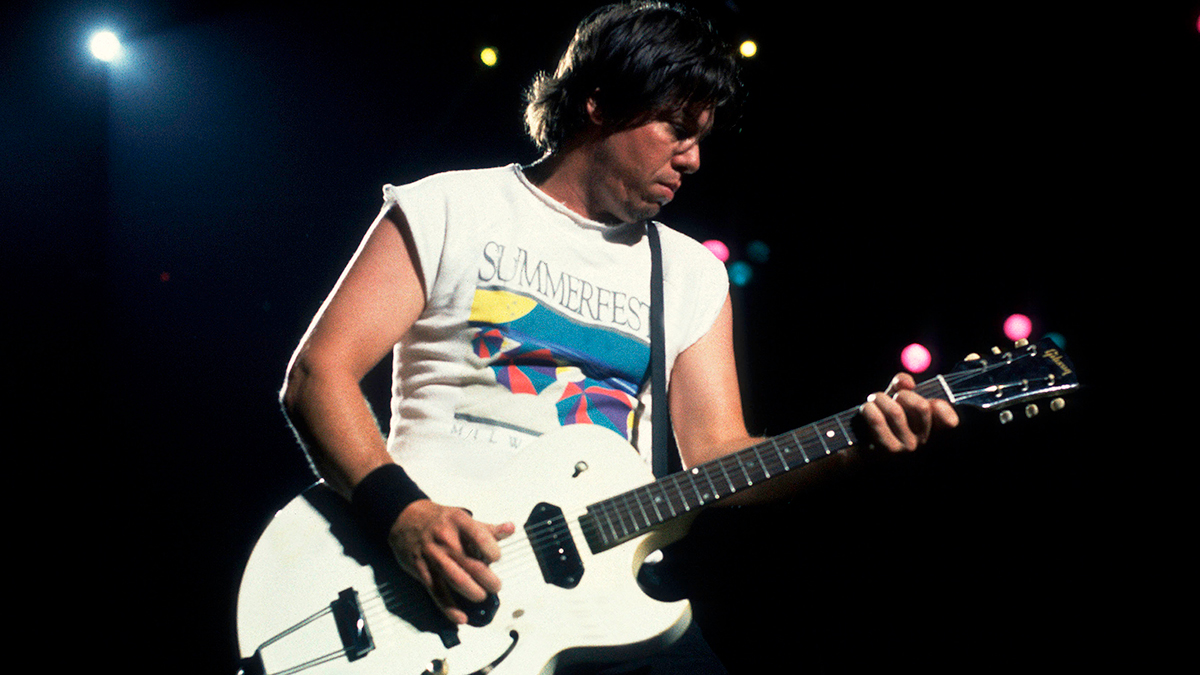Guitarist Rob Cavestany Looks Back at the Rise, Fall and Rebirth of Death Angel
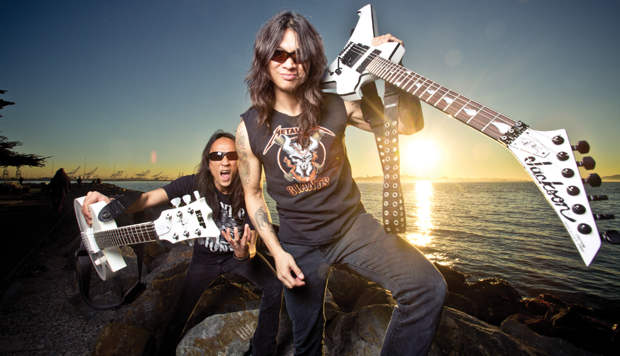
This is an excerpt from the May 2014 issue of Guitar World. For the rest of this story, plus features on Zakk Wylde & Joe Satriani, John Frusciante, how to build a pedal board, a complete finger picking lesson, columns, tabs and reviews of new gear from Line 6, Ibanez, Strymon, G&L, Ernie Ball and Orange, check out the May 2014 issue at the Guitar World Online Store.
Blood Sacrifice: In 1990, Death Angel were poised to be as big as Metallica until a horrific accident brought their ascent to a halt. Guitar Rob Cavestany looks back at the group’s rise and fall, and the rebirth that has brought them hard-won success.
Sitting in his home studio in Oakland, California, on a bright, breezy afternoon this past January, Cavestany appears to have come through Death Angel’s tribulations having regained a bit of his youthful optimism.
The 45-year-old guitarist looks fit and nonchalantly rocks a timeless thrasher look that includes a full head of long black hair, a sleeveless shirt and tattooed arms. He’s also beaming with smiles and, in charming Cali fashion, is hella stoked to explain how a group of teenage cousins won over the Eighties Bay Area thrash scene, imploded, rebuilt and now—30 years later—sound better than ever.
We’re soon joined by Cavestany’s six-string wingman, Aguilar, and his affable black lab, London. Over a plate of fresh fruit and cheese (the latter a particular favorite of London’s), Cavestany begins the Death Angel story at a familiar place for many budding rockers who came of age in the Seventies.
“Kiss were the main reason why we got into music,” he says between sips of beer. “We had posters all over and we worshipped them. The original lineup of Death Angel were all cousins, so we would give lip-sync performances at family functions.”
The jump from lip-syncing to really playing came after Cavestany and Dennis Pepa’s mothers took the boys to Kiss’ 1979 performance at the Cow Palace, outside of San Francisco. Witnessing the larger-than-life set lit a fire under the 11-year-old Cavestany, who made the decision then and there to play an instrument. He started off on drums, but it wasn’t until he picked up his father’s old acoustic guitar that he found his calling. He soon graduated to electric guitar and began exploring even heavier music.
All the latest guitar news, interviews, lessons, reviews, deals and more, direct to your inbox!
“When I started to play guitar, at the very first it was Sabbath, Zeppelin and AC/DC,” Cavestany says. “Then came Priest, Maiden and Scorpions, then Accept, Tygers of Pan Tang, along with Eddie Van Halen, and Randy Rhoads of course, who would have to be my all-time hero.”
By 1983, when Cavestany was all of 15, Death Angel—at that time a four-piece featuring Galeon, Gus and Dennis Pepa, and Cavestany on both vocals and guitar—cut their first four-song demo, Heavy Metal Insanity, which reflected their classic metal and NWOBHM inspirations. Cavestany credits his discovery of Metallica as being the turning point when Death Angel’s style evolved into the manic thrashing sound they would become known for.
“Seeing Metallica play was the next thing after we saw Kiss, when we’re all like, Oh shit! We’ve got to change our style. We’ve got to get heavier and faster,” Cavestany says.
Metallica would play a pivotal role in the Death Angel story in more ways than one. After attending a Metallica in-store signing, the guys unexpectedly hit it off with Kirk Hammett. Over the next few years, as Death Angel continued to gig and refine their sound, they would pass their boom-box demos to the guitarist whenever they would run into him at local metal shows. Their persistence paid off when Hammett agreed to produce their second batch of songs, which would become their 1986 Kill as One demo.
“Kirk was really nice and always really supportive of us,” Cavestany recalls. “Eventually he heard enough potential to get himself involved, which was very major for us.”
Kill as One benefited from Hammett’s production insights as well as the addition of singer Mark Osegueda (another of Cavestany’s cousin), whose style gave the music a fresh thrash flavor and edge that was missing from the old-school sounds on Heavy Metal Insanity. Kill as One became popular among the tape-trading scene, and Death Angel scored key gigs opening for bands like Slayer. Soon, indie label Enigma approached the group with a contract for a full-length record.
“I’m sure the novelty is what first got people’s attention,” Cavestany says with a laugh. “Like, These guys are way young, they’re all cousins, and they look like small Chinese girls going crazy onstage!”
Riding a wave of youthful exuberance and unwavering confidence, Death Angel blazed through the recording of the songs that would become their debut album, 1987’s The Ultra-Violence. Tracked in three days and mixed in two, their fierce debut confirmed that these kids weren’t a novelty—this was serious thrash on par with many of the older more experienced bands of the scene. It had the speed of early Metallica, the unhinged quality of Slayer and the brazen attack of Anthrax.
“We didn’t really second-guess too many things that we were doing,” Cavestany says. “We just went at it relentlessly. We thought it was amazing. Now if I try to play along to that CD, I almost can’t do it because we are so out of control. [laughs] It’s so off, and everyone’s crazy. But it’s got that rawness.”
While Death Angel may have managed to get a full-length pressed and catch some people’s attention, they certainly weren’t living on easy street. The guys were still toiling at their day jobs and relying on their families’ support.
“I was working at Tower Records when The Ultra-Violence came out,” Cavestany recalls. “And my dad was my main roadie for the first couple of years, buying me equipment and driving me around. Our families couldn’t understand the kind of music we were trying to play, but they were proud of us. My grandmother would come to our shows, and my mom would be there wearing her Death Angel shirt.”
For the rest of this story, plus features on Zakk Wylde & Joe Satriani, John Frusciante, how to build a pedal board, a complete finger picking lesson, columns, tabs and reviews of new gear from Line 6, Ibanez, Strymon, G&L, Ernie Ball and Orange, check out the May 2014 issue at the Guitar World Online Store.
Photos: Jimmy Hubbard
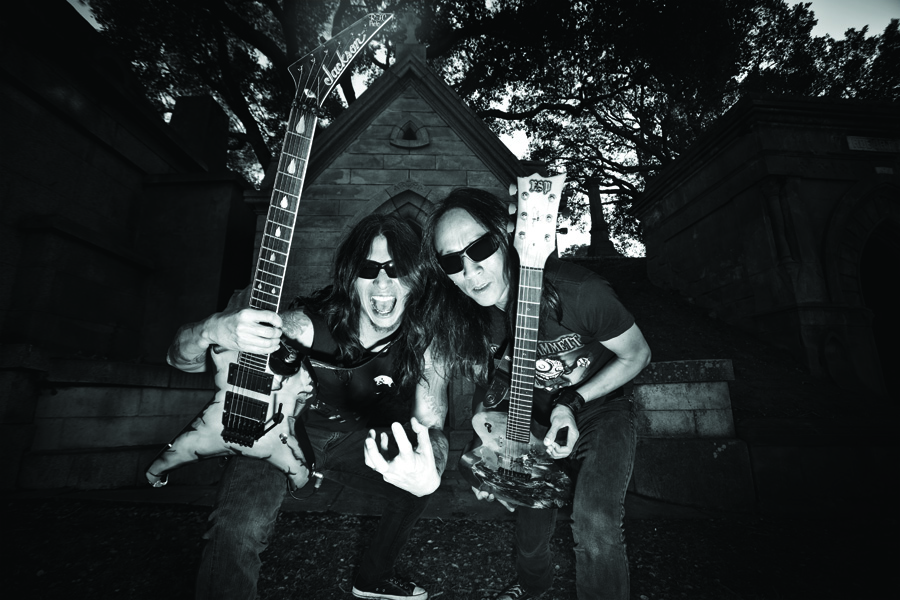

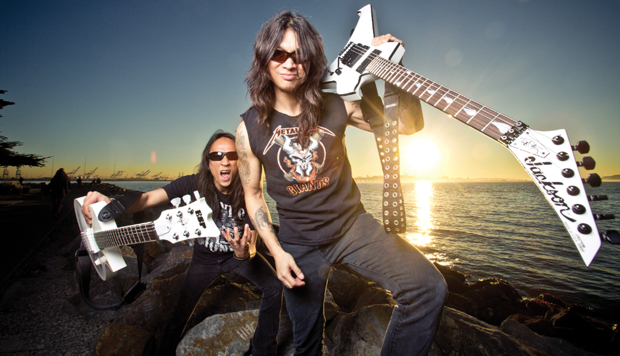
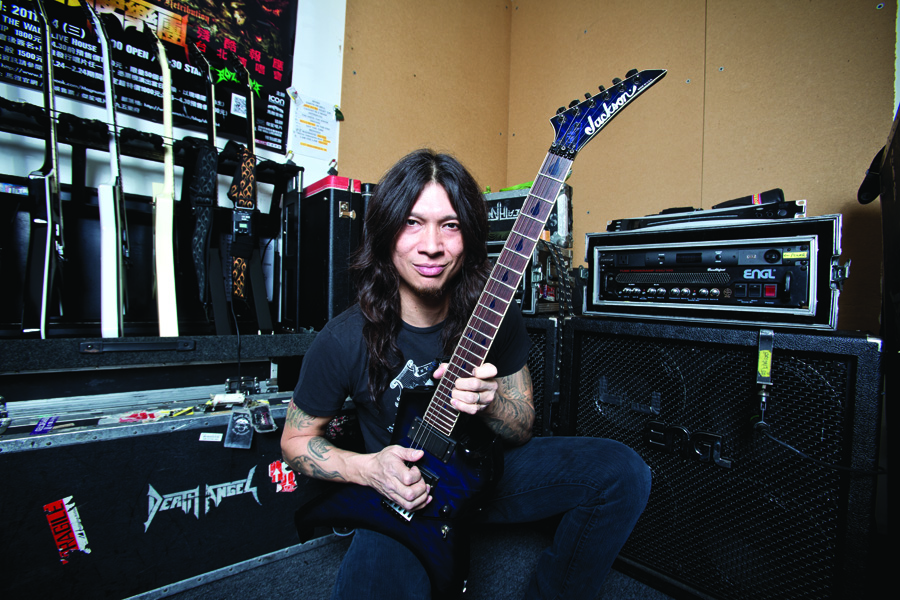
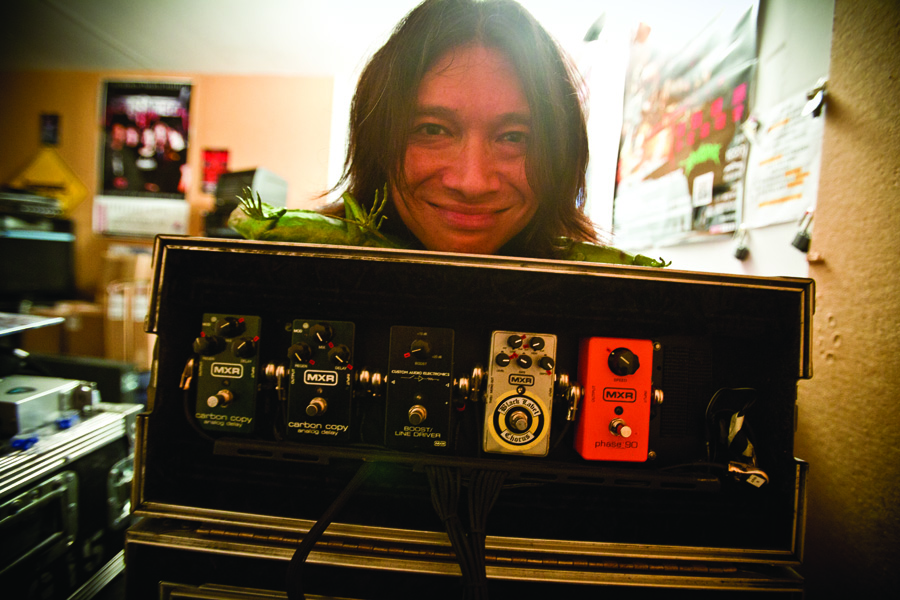
Brad is a Brooklyn-based writer, editor and video producer. He is the former content director of Revolver magazine and executive editor of Guitar World. His work has appeared in Vice, Guitar Aficionado, Inked and more. He’s also a die-hard Les Paul player who wishes he never sold his 1987 Marshall Silver Jubilee half stack.


